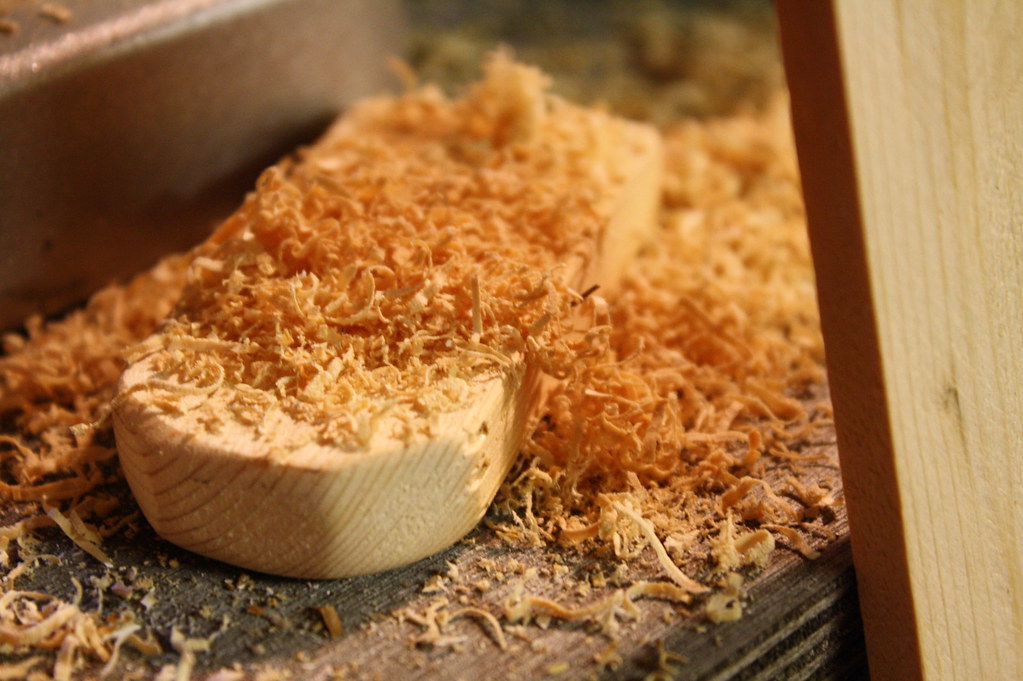比利時魯汶大學科學家發現,一種全新的化學過程能夠把木屑中的纖維素變成汽油的烴鏈,科學家稱之為「綠能碳氫化合物」(Green Hydrocarbons),認為可以用來當做汽油添加物,或是塑膠的成份。
這個研究顯示,未來生質煉油技術很可能是運輸燃料、化學物質和材料生產的關鍵。

汽油、塑膠原料短缺
「對以液態汽油為動力來源的汽車來說,我們的產品可以立即當做環保添加物,取代部分傳統精煉汽油。」魯汶大學Bert Sels教授說。
這種新的綠能碳氫化合物應用範圍遠不止於此。
「綠能碳氫化合物可以用於乙烯、丙烯和苯的生產過程,這些物質是塑膠、橡膠、絕緣泡綿、尼龍和塗料等產品的重要原料。我們正面臨碳氫化合物的短缺,因為從原油或頁岩中提取這些特殊烴鏈是越來愈困難、越來越貴。衍生自纖維素的烴鏈,能及時解決這個問題。」Sels說。
不需與糧食作物競爭 木屑纖維素簡單變能源
纖維素是植物的主要組成物質,存在於所有不可食用的植物中,包括木頭、稻桿、草、棉花和舊紙張中;木屑本來是鋸木廠不是很受歡迎的副產品,常用來作為工業鍋爐的燃料、塑合板、木漿、木炭煤塊、家庭用火爐燃料或護根土。
魯汶大學研究員Beau Op de Beeck開發出將木屑纖維素變成烴鏈的新方法,產生的半成品只要再一個簡單步驟,就能變成蒸餾完全的汽油。
「我們在實驗室建造了一個化學反應爐。把從鋸木廠蒐集來的木屑放進反應爐,放入催化劑,加上適當的溫度和壓力,大概半天就能把木屑中的纖維素變成飽和烴鏈,也就是烷烴。」魯汶大學Bert Lagrain博士說。
「從經濟學的角度,纖維素有很大的潛力。纖維素隨處可得,是植物廢棄物,也就是說它不會像第一代能源作物一樣和糧食作物競爭。纖維素能產生5到6個碳氫原子的烴鏈。」Sels說。「簡言之,這個新技術能夠用生物質製造石油化學產物,將生質經濟和石油化學連接起來。」Lagrain說。
Belgian researchers have found a way to convert ordinary sawdust into building blocks for gasoline.
Using a new chemical process, scientists led by a team at the Katholieke Universiteit Leuven’s Centre for Surface Chemistry and Catalysis were able to convert the cellulose in sawdust into hydrocarbon chains.
The researchers call them “green hydrocarbons” and say they can be used as an additive in gasoline, or as a component in plastics.
“Our product offers an intermediate solution for as long as our automobiles run on liquid gasoline. It can be used as a green additive – a replacement for a portion of traditionally-refined gasoline,” said Professor Bert Sels at KU Leuven.
But the possible applications of the new hydrocarbons go far beyond gasoline.
“The green hydrocarbon can also be used in the production of ethylene, propylene and benzene – the building blocks for plastic, rubber, insulation foam, nylon, coatings and so forth,” Sels explained.
“We are currently facing shortages in this because it is becoming quite difficult and more expensive to distil these specific hydrocarbon chains from crude oil or shale gas,” said Sels. “In time, hydrocarbon derived from cellulose may provide an alternative.”
This research foreshadows a future in which bio-refineries will be key to the manufacture of transportation fuels, chemicals and materials.
“We have also built a chemical reactor in our lab,” explained Dr. Bert Lagrain at KU Leuven. “We feed sawdust collected from a sawmill into the reactor and add a catalyst – a substance that sets off and speeds the chemical reaction.”
“With the right temperature and pressure, it takes about half a day to convert the cellulose in the wood shavings into saturated hydrocarbon chains, or alkanes,” he said.
Cellulose is the main substance in plant matter and is present in all non-edible plant parts of wood, straw, grass, cotton and old paper.
Often viewed as a nuisance byproduct in sawmills, sawdust does have other uses. It is used as fuel for industrial boilers, used to manufacture particleboard and wood pulp, charcoal briquettes and stove pellets and spread for mulch.
Now KU Leuven researcher Beau Op de Beeck has developed a new method to derive hydrocarbon chains from the cellulose in sawdust.
“The result is an intermediary product that requires one last simple step to become fully-distilled gasoline,” explained Sels.
“From an economic standpoint, cellulose has much potential,” said Sels. “Cellulose is available everywhere; it is essentially plant waste, meaning it does not compete with food crops in the way that first generation energy crops do. It also produces chains of 5 to 6 hydrocarbon atoms.”
“Essentially, the method allows us to make a petrochemical product using biomass, thus bridging the worlds of bio-economics and petro-chemistry,” said Dr. Lagrain.
※ 全文及圖片詳見:ENS






